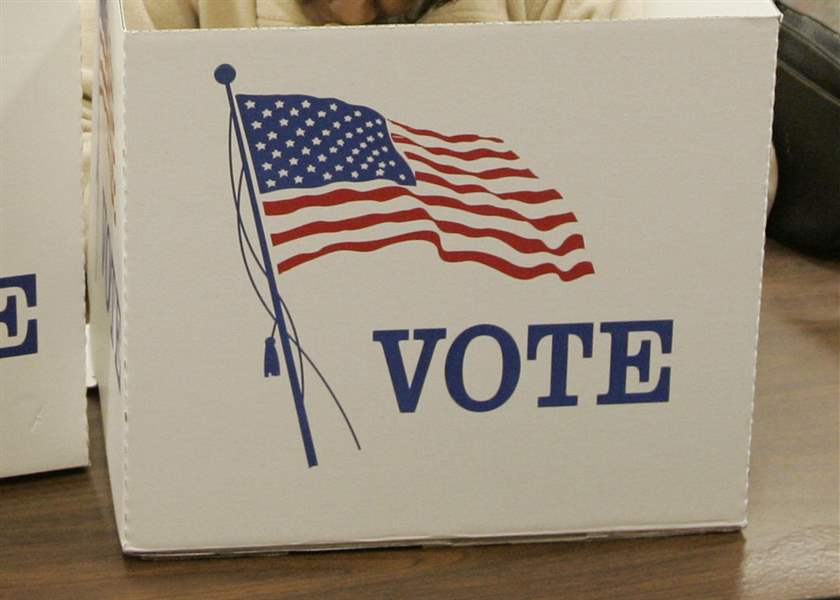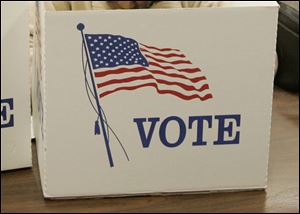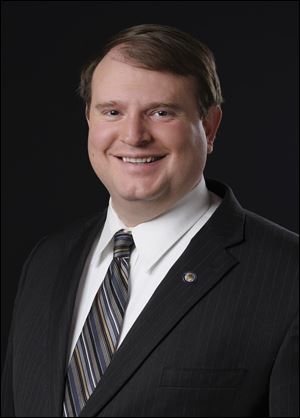
2018 could be a busy ballot year in Ohio
12/31/2017
Issues of recreational marijuana and the regulation of puppy mills could be among the items on the ballot when Ohioans head to the polls in 2018.
The Blade
Buy This Image
COLUMBUS — Just as voters are recovering from the record-breaking onslaught of TV ads over drug pricing, they’d better prepare for what could be a busy ballot in 2018.
Recreational marijuana could be back.
There could be dueling issues to change the inherently political process through which Ohio redraws congressional districts every 10 years.
Petitions are in the field to put a pair of constitutional amendments on the fall ballot to give voters in counties and townships home-rule power — like cities and villages have — to pass laws via the ballot box.

Issues of recreational marijuana and the regulation of puppy mills could be among the items on the ballot when Ohioans head to the polls in 2018.
A proposed constitutional amendment would require the state to provide more local rehabilitation and treatment options for low-level, non-violent drug offenders and give sentence credit for time they’ve spent in treatment, work, or education programs.
Another would impose stricter regulations on puppy mills.
“The reason people go to the ballot is because the legislature isn’t dealing with their problems,” said Peg Rosenfeld, elections specialist for the League of Women Voters of Ohio. “That’s why we have initiative and referendum. They figured that out in 1912. If the legislature can’t or won’t do it, this is a way for people to do it for themselves. It looks like that’s what’s happening.”
Two years ago voters agreed to change the redistricting process for state legislative districts. The new system will be used for the first time after the next U.S. Census in 2020.
Among other things, it is designed to provide for more bipartisan input, require the resulting map to be more politically representative of the state as a whole, and attempt to keep counties and communities intact when possible.
If similar rules were applied to congressional districts, there would be no “snake by the lake” — the 9th District represented by U.S. Rep. Marcy Kaptur, a Toledo Democrat, that snakes along the Lake Erie shoreline from Toledo to Cleveland without keeping a single county fully intact.
There would be no 4th District “duck” with its beak in Lorain County, its feet in Urbana, and its tail feathers in Mercer not far from the Indiana border. That district is represented by U.S. Rep. Jim Jordan, an Urbana Republican.
Legislative leaders were initially reluctant to do something similar for congressional districts until an effort by government watchdog and voting-rights groups began gathering steam for a November 2018 ballot appearance.
Now there’s the potential for two proposals — one on the May 8 primary ballot and another on the Nov. 6 general election ballot.

Obhof
Senate President Larry Obhof (R., Medina) said he expects passage of a resolution with bipartisan support by the end of January. The deadline to put a constitutional amendment proposed by the legislature on the primary ballot is Feb. 7.
It remains to be seen whether the citizen-proposed effort would continue once its backers see what’s in the legislative proposal. The deadline for filing petitions for November ballot issues is July 4.
“We deserve real reform that is meaningful. If it’s on the May ballot and it’s not acceptable, we’ll marshal the resources to fight it and continue to collect signatures,” said Catherine Turcer, executive director of Common Cause Ohio.
While the accuracy of the summary language for petitions for most of the proposals have been certified by Attorney General Mike DeWine’s office, no language has been submitted for the latest plan to legalize recreational marijuana and industrial hemp.
It’s being pushed by elements behind 2015’s failed pot legalization proposal who are angry with the process used by the state that did not pick them among the state’s 24 licensed cannbis-growing operations.
While the 2015 proposal failed badly at the polls, it did serve as impetus for lawmakers to legalize cannabis for medical use only.
Every one of the pending issues is a proposed constitutional amendment. None is a proposed initiated statute, which has a lower signature threshold up front and gives the General Assembly first crack at passage before another round of petitions puts the question directly to voters.
The result is a statute, which could eventually be altered by lawmakers like any other law, as opposed to a constitutional amendment, which can only be changed by another voter-approved amendment.
Ms. Rosenfeld said she was disappointed that discussions about reforming the system by the Ohio Constitutional Modernization Commission were cut short when the General Assembly eliminated funding.
“They were very close to coming up with a really creative solution to make it easier to get initiated statutes on the ballot and maybe make it more difficult — but not too much — to do constitutional amendments,” she said. “They were consciously and explicitly urging people to go for statutory rather than put everything in the constitution.”
Once the issue of redistricting is decided next year, Ms. Rosenfeld said ballot issue reform might be next on the league’s agenda.
“If you’ve got enough money, you can get anything on the ballot,” she said. “It you don’t, it makes it more difficult for citizen initiatives, but that’s not going to stop the people who want casinos or marijuana, and it won’t stop PhRMA from outspending everybody in the world.”
Contact Jim Provance at jprovance@theblade.com or 614-221-0496.